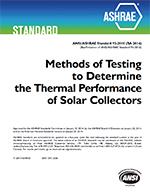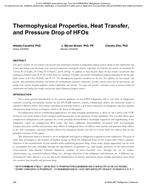To be more resilient to heat waves, buildings will need the capacity to provide habitable indoor conditions without power for limited amounts of time. The wet-bulb globe temperature (WBGT) heat index is proposed for use as a ‘passive habitability’ metric for evaluating indoor occupant heat stress risk. A method is presented to evaluate occupant heat stress vulnerability by calculating WBGT values using energy model outputs (Ta, To, RH, and zone infiltration), an indoor WBGT equation, and standard heat stress threshold charts. An analysis of the heat stress evaluation method illustrates the need for simulations to include heat wave weather data inputs. A method validation study compares measured WBGT values from an existing unconditioned space with WBGT values calculated using an energy model of the space; a linear regression comparison illustrates a high R-Squared of 0.9223.
Citation: ASHRAE/IBPSA-USA Bldg Simulation Conf, 2016
Product Details
- Published:
- 2016
- Number of Pages:
- 8
- Units of Measure:
- Dual
- File Size:
- 1 file , 1.9 MB
- Product Code(s):
- D-BSC16-36


